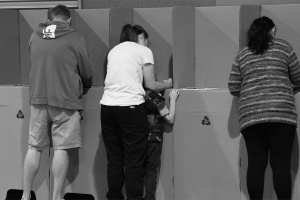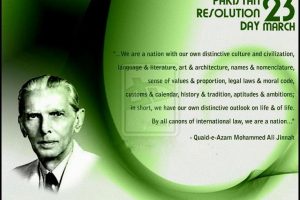By Syed Atiq ul Hassan, Sydney
“I ACKNOWLEDGE THE REAL CUSTODIANS OF THIS LAND”
The historical signs and storytellers assert that human beings had been on this incredible island continent for the last 60,000 years. It is claimed that there was a time when this land was physically connected with Asia. Due to a natural evolution on earth, this great piece of about 3 million square miles (7.7 million square km) split and became a separate colossal island continent. The storytellers, cartographers, and navigators called this continent Terra Australis or Southern Land. During the 16th and 17th Centuries, Chinese, Dutch, Spanish, and English navigators explored this continent. In the 16th century, a Spanish sailor & explorer, Luís Vaz de Torres, found this continent and nearby islands and called it Torres Strait. In 1606, a Dutch navigator, Willem Janszoon, landed in Australia. In the 17th century, another Dutch navigator mapped the northern, western, and southern regions of this continent and named it ‘New Holland.’ Then in 1770, during the King George III of Great Britain’s regime, Lieutenant James Cook, the Commander of the first fleet, landed at Botany Bay (Sydney Cove).

Lieutenant James Cook raised the Union Jack on August 22, 1788, claiming the New South Wales land and almost half of the continent under Great Britain’s ownership. Captain Cook returned to Great Britain with his favorable evaluation for transforming the continent as a Britain Colony; hence, Australia’s Colonization commenced.
Under the command of British Royal Navy officer, admiral Arthur Phillip, eleven ships containing hundreds of dangerous convicts arrived at the wharf of Sydney Cove on January 18, 1788, and in the following several months. These convicts were brought to explore the land, develop infrastructure, deal with the local aborigines, establish the British king’s rule, and create a new Penal Colony of Britain. The beginning of the independent continent as a British Colony was the start of the destruction of the thousand’s years old civilization of the native owners called aborigines.
Admiral Arthur Philip became the first Governor-General of New South Wales. He established New South Wales, a British Penal Colony. Hence, White Australia’s process began with eradicating local people and their thousands-year-old tribal system, traditions, culture, art, languages, and lifestyle. January 26 (1788) is referred to as the day when the first English fleet arrived on Sydney Cove. It used to be called First Landing Day or Foundation Day.
In the process of colonialism, like in other parts of the world, the centuries-old native social setup, culture, and traditions were dumped by English rulers. According to the historical documents, 10 to 30 percent of Aboriginal and Torres Strait Islander children were snatched forcibly from their parents and handed over to missionary and State institutions under the then government policy between 1910 to early 1970s. The rulers claimed to assimilate these tens of thousands of native children into the Anglo-Saxon society and teach them European values and their way of life. Most of these stolen children were under the age of 5. Similarly, there are horrifying tales of mistreating, sufferings, and hurt of indigenous people and Torres Strait Islanders and their culture’s extinctions. Hence, for the indigenous people who are the real owner of this land, the beginning of Australia’s Colonization is, in fact, the launch of the elimination of indigenous people and their belongings. For Indigenous people, January 26 is not independence or national day rather an Invasion Day of this continent. The Indigenous people, every year, mark January 26 as Mourning Day or Invasion Day.
Today, these indigenous people are the most disadvantaged in Australia. Having a life expectancy only 17 years below the rest of the Australians and with many living in third world conditions, they need the reformation in every walk of life. According to a World Health Organisation report, indigenous people’s healthcare standards are a century behind the rest of Australia. Generally, the life expectancy of male indigenous is just 33 years. Due to the lack of education, job opportunities, and other social facilities, crimes and gun culture increased in indigenous people. Child abuse, rape, and lootings are common crimes in remote areas. The law-and-order situation in remote areas is terrible that are many times not reported in the media.
It is a fact since the abolition of the White Australia policy in 1973, significant reforms and measures uplifting the living standard of Indigenous Australians. However, the short-term reforms, facilities, special allowances, in bits and pieces, and official sorry to indigenous people could not erase the horrible stories about what was done to their elders, women, and children in the past.
After long ignorance, in May 1995, the National Inquiry into the Separation of Aboriginal and Torres Strait Islander children from their families was established, which was chaired by Sir Ronald Wilson. In May 1997, a report on the Stolen Generations, Bringing Them Home, stemming from the inquiry chaired by Sir Ronald Wilson and was tabled in the Parliament. Exactly after a year, in May 1998, the first National Sorry Day was held to mark the stolen children’s report’s anniversary. In February 2000, John Howard played politics with them by abandoned the deadline on reconciliation to be achieved by the eve of the federation celebration. Since then, indigenous leaders, community groups, and human rights organizations have raised the issue on different platforms, seminars, demonstrations. Anyway, then Howard’s government refused to offer ‘sorry’ to indigenous people. Firstly, John Howard’s stance was that whatever done to the indigenous people in the past was done by pasts governments and should not be liable to the present government and generation; secondly, the apology or sorry could open the door to expensive compensation claims. Those statements from the former Prime Minister (John Howard) put more salt on indigenous people’s wounds and agitated them further.
The following government of Kevin Rudd, on February 12, 2008, laid down a new tradition in the Australian Federal Parliament by ceremonial welcoming from indigenous people for the first time in over a hundred years of past Australian history. He invited more than 100 indigenous elders, women, and youth to build a new image of Australia. Kevin Rudd handed the indigenous people a message stick that said ‘the story of our coming together.’ The ceremony combined with ancient Aboriginal dances, music, the song with more modern dance and performance. The following day, February 13, 2008, Kevin Rudd added a new page in Australian history. Being the Prime Minister of Australia, Kevin Rudd submitted an official ‘Sorry’ to the indigenous people and Torres Strait Islanders on all the mistreatments and wrongdoing, especially to the stolen generation (who were forcibly removed children from their parents during) for over 200 years. Prime Minister Kevin Rudd said that the Australian now reflects the blemished chapter in our nation’s history with the true reconciliation spirit. He said that he would also like to assure the first Australians that it will never happen again. Indeed, acknowledgment, realization, and recognition by the Ex Australian Prime Minister Kevin Rudd for the indigenous people were appreciated by the Australian nation and worldwide.
The government, political parties, and leaders must remember what happened on January 26 and must understand indigenous Australians sentiments while delivering messages to multicultural Australians to demonstrate dignity, unity, and diversity; they must see this day as a reminder to acknowledge the real owners of this land (indigenous people) and all the sufferings their forefathers faced during the process of Colonization. This is the exact reason why indigenous Australians do not celebrate Australia day while other Australians enjoy a public holiday, awards distributions, remembrance of our heroes, fireworks, and BBQ. In contrast, the Indigenous Australians call January 26 the Invasion Day. Indigenous leaders stage rallies protests raising their flags, and remember the sufferings, killings of their elders, women, and stolen children.
Australia has a real democracy and freedom of speech. Therefore, everyone respects activities delivered by the indigenous people on January 26. However, the reports, images of the rallies, protests, and addresses of the indigenous leaders on Australia Day go worldwide and get coverage in headlines by the international media. It does not create a fair image of Australia. Therefore, it may be appropriate to respect their voice and protest that Australia Day must be moved to another date. For example, the Abolition of the White Australia Policy was a historical event with a significant impact on Australian history; similarly, Australia Day can be moved to another date.
Recently, Australian Prime Minister Scott Morrison announced a change in the Australian National anthem’s wording by replacing the word ‘Young’ with ‘One’ to recognize Australian indigenous history. Australians mostly appreciated and regarded this change. Therefore, most Australians, particularly indigenous people, would most likely be happy if we change Australia Day from January 26 to any other date respecting the indigenous people’s pain and sufferings. This change will further strengthen and bring indigenous and non-indigenous Australians together, celebrating Australia day together without any dispute. (The writer is a Sydney-based journalist, writer, Editor Tribune International, and a community leader).
Concluded on the Australia Day 2021




